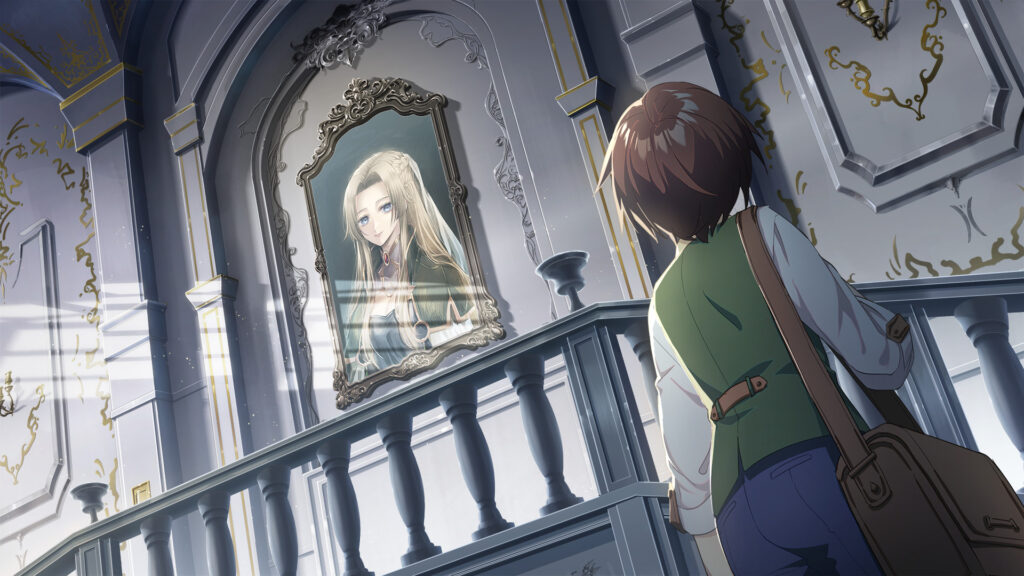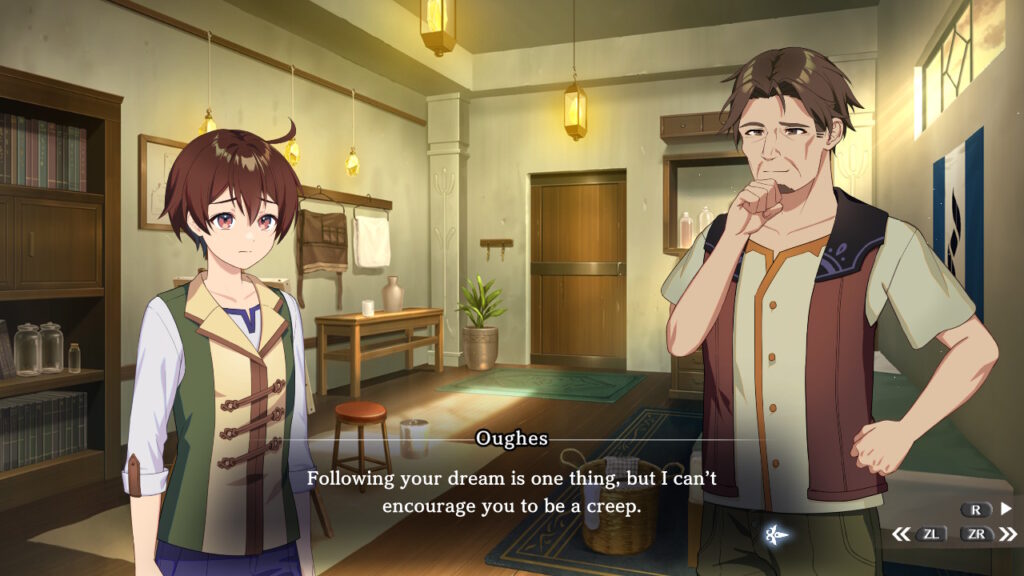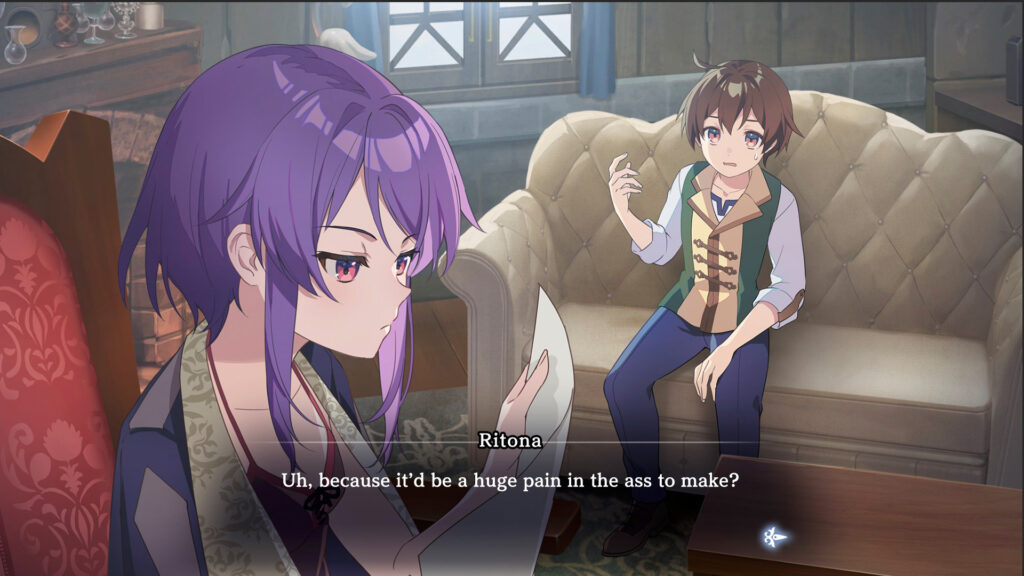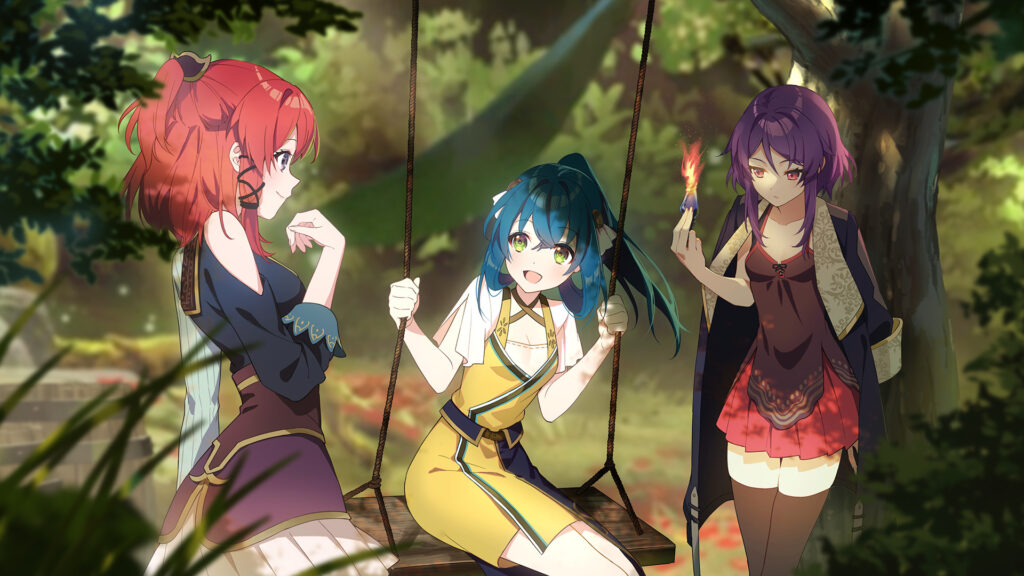When you jump into a story set in a fantasy world concerned with swords and magic, the last thing you expect the heroes to be concerned with are the mundane struggles of everyday life, such as getting a job. Alice in Dissonance’s fault series is meant to focus on “human drama rather than flashy battles and wizardry,” and is an homage to science-fiction from the 70’s and 80’s. Their latest installment in the fault series, fault – Silence the Pendant – Lightkravte, is the first part of a two-parter prequel, but stands as a good entry point for newcomers to the series.

One thing I should make clear is that the fault series is quite literally a visual novel, meaning you won’t find any dialogue choices, any puzzles, or any gameplay at all for that matter. There’s no voice acting either, so all you have to do is read and look at the pretty visuals. If you’re not much of a reader, this game is not going to be for you. Alright, now onto the rest of the review.
A Lighthearted Journey with Some Heavy-Hitting Moments
Lightkravte takes place in the kingdom of Rughzenahaide, and is centered around Khaji Oberg, a fruit farmer’s son who dreams of being a painter. Khaji is at first, every bit of your average harem anime protagonist. He’s rather plain-looking, isn’t very good at what he’s trying to pursue, and he’s obsessed with girls. In fact, all he wants to paint are beautiful women. Yeah, pretty creepy, and the other characters call him out on this quite a few times. I, too, was initially dissuaded by his antics. Fear not though, for he does grow to redeem himself.

Khaji is quite the flawed protagonist, but his journey is about him realizing his flaws. One of the first few interactions you’ll have in the game is with Khaji’s dad. He hears that Khaji’s application as a painter has been rejected for the third time and talks to him about it. While he’s slightly disappointed that no one will take over the fruit farm, he’s supportive about Khaji’s choice to step away from the family business. At the same time, he’s concerned for Khaji, as he doesn’t seem entirely focused on becoming a painter, and doesn’t realize how his actions can affect the people around him.
It’s an endearing conversation to witness and feels very organic. Even Khaji’s thoughts after that conversation are very realistic. He starts to question whether or not he really enjoys painting and if all the effort is worth it after he hears his dad’s words. Khaji’s story is essentially about coming to terms with the world’s reality, and although his pubescent nature can be annoying at times, it’s a worthwhile journey as Lightkravte has some superb character writing. The secondary cast are also a fun bunch, with Ritona and Princess Selphine being recurring characters from the first two games, but they take a back seat in Lightkravte and let the new characters shine.

The Strengths and Faults
For newcomers, you’ll find a lot of unfamiliar terms in Lightkravte, and usually those words will be underlined amidst the rest of the dialogue. To know their meaning you can press Y and open its entry in the game’s encyclopedia. It’s a handy feature, albeit the explanations are more wordy than I’d like them to be, but I’d prefer it if it was a bit more streamlined. If you open the encyclopedia otherwise, you’ll find that the words are arranged haphazardly rather than in alphabetical or even chronological order. If you’re someone like me, who frequently switches between games and forgets most of the details when coming back to the game, you’d definitely want them sorted in some order.
I could sing praises about Lightkravte’s visuals for ages. It’s full of lively animation, from the character sprites to the CGs. One thing that’s especially impressive is the use of camera work on the screen. Elements in scenes, such as objects in the background and characters, will move around in tandem with the Switch’s gyroscope. It’s impressive considering how few third-party titles make use of the gyroscope. You’ll also find that each scene is backed by a lovely soundtrack and just enough ambient noises, whether that’s a bustling town or a quaint forest.

Since Lightkravte is quite the traditional visual novel, I expected there to be some sort of sound album or, at the very least, a gallery for the CGs, but oddly enough, it’s missing both of those. It’s a crying shame considering how pretty the visuals are. If you do want to take a look back at any of the picturesque scenes for the game, you’ll need to manually take screenshots. I will give credits to the dialogue backlog, which basically shows all the past dialogue that has occurred in case you missed something, or in my case, mashed the A button one too many times.
Lightkravte does have quite a few loose threads. There’s political conflict and an elaborate mana system that are brought up within the story a few times, but we’re only allowed a glimpse of what Rughzenahaide has to offer. Presumably, this is because the second part of the sequel will touch upon these aspects a bit more, but those wanting a complete story might feel a bit dissatisfied.
Real Talk
All in all, Lightkravte is a good start to the prequel arc in the fault series, and is a decent introductory game for newcomers. You can expect a decent 7-9 hours from the game, but replay value isn’t something you can expect from this sort of straightforward story. Although it lacks quite a few quality-of-life features you’d expect from a visual novel, its art and story makes it worth the playthrough. Lightkravte is available on the Nintendo Switch eShop as well as Steam.



